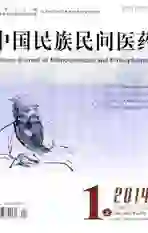脂质体作为疫苗佐剂的研究进展
2015-01-05王礼燕郭亚东鲁卫东
王礼燕 郭亚东 鲁卫东
【摘要】 总结近年来的有关文献,对疫苗免疫佐剂的研究现状及主要的免疫佐剂脂质体的理化性质与免疫原性、脂质体疫苗的特点进行了归纳、分析和综述,对脂质体作为疫苗免疫佐剂存在问题及研究方向提出建议。
【关键词】免疫佐剂;脂质体;脂质体疫苗;研究进展
【中图分类号】R967【文献标志码】 A【文章编号】1007-8517(2014)01-0027-03
The research progress of liposome as a vaccine adjuvant
Wang Liyan, Guo Yadong,Lu Weidong
(College of pharmacy, Kunming medical university, Yunnan, Kunming 650500)
Abstract:The progress in immunoadjuvant of vaccine and the physicochemical properties and immunogenicity of liposomes, which is the main immunoadjuvant, as well as the features and problems of liposome vaccine were analyzed and summarized, what should be focus on in the future research was indicated.
Keywords: immunoadjuvant; liposome; liposome vaccine; research progress
1免疫佐剂
11免疫佐剂的概述在免疫学中,佐剂(adjuvant)是指能够增强或调节抗原体液或细胞免疫应答的物质。佐剂在有限抗原数量时有助于诱导早期的、较强的和长时间的免疫应答。成为纯化疫苗,亚单位疫苗和DNA疫苗研究的焦点,这些疫苗的免疫原性较弱,需要佐剂来激活免疫应答 [1-4]。随着免疫学研究的不断深入和基因工程技术的迅速发展,基于对免疫效果和生产使用成本降低的追求,佐剂的研究在现代免疫学中显得越来越重要。通过提高佐剂的效果,达到减少抗原用量,降低对机体的毒副作用,是理想佐剂的一个重要标志。
12疫苗佐剂的研究现状2009年以前,铝佐剂是美国FDA唯一认可用于人用疫苗的佐剂。但由于铝佐剂疫苗引发不够理想的Th1免疫应答以及较弱的细胞免疫,并且,以铝化合物为佐剂的疫苗无法冷冻保存,限制了铝佐剂在疫苗使用中的广泛性,因而寻找替代佐剂迫在眉睫[5]。在所有替代佐剂的研究中,脂质体是最具发展前景的一种。1974年,Gregoriadis 和Allison 首次报道了脂质体作为免疫佐剂的应用[6-7]。从此,脂质体以及相关的泡囊载体作为高效的诱导体液及细胞免疫的佐剂广泛用于感染性疾病及癌症疫苗中[8-10]。目前,至少有8种脂质体佐剂疫苗系统被批准用于人用或在进行临床实验[5]。其中,瑞士Crucell的流感疫苗Inflexal V及甲型肝炎疫苗Epaxal是目前上市的唯一两种脂质体佐剂疫苗。
2脂质体
21脂质体的形态脂质体 (liposome) 自1960年由英国学者Bangham首次制得,系指将药物包封于类脂质双分子层形成的薄膜中间所制成的超微型球状药物载体制剂。是由脂质双分子层组成的、内部为水相的闭合囊泡,具有生物膜的功能和特性,如图1,图2。
脂质体主要是由磷脂及其它附加剂组成,磷脂在脂质体中形成双分子层,其它附加剂起到提高脂质体的稳定性和靶向性等作用。由于脂质体包封材料的特殊性,具有很多优点,如:生物相容性,靶向性,缓释性,增加药物的稳定性等。
22脂质体的制备方式传统的薄膜蒸发法是脂质体制备方法中最基本和应用最广泛的方法[11],本法简单,易操作,适合实验室研究。流感病毒是囊膜病毒,对乙醚,氯仿等有机溶剂均敏感。用薄膜蒸发被动载药法制备流感疫苗脂质体,它避免了疫苗与有机溶剂的直接接触。主要存在的问题是工艺的不完善、有机溶剂或表面活性剂的残留都会导致蛋白质药物的生物活性降低,而且难以实现大批量脂质体的制备[12] 。
23脂质体理化性质对其免疫原性影响对脂质体的主要理化性质对脂质体流感疫苗免疫原性的影响从机制上进行系统的研究,为脂质体作为流感疫苗佐剂的应用奠定理论基础。经过35年以及超过1300个研究,很明显脂质体理化性质对其免疫原性影响极为重要。对免疫原性影响较大的包括:
231抗原的包被方式。决定抗原释放速度以及被APC识别的难易[13]。
232脂质体组成、电荷、粒径等。能改变脂质体药动学性质从而获得理想的停留和抗原摄取、处理以及递呈在MHC分子[14-15]。Mann等研究发现,小粒径脂质体刺激较强烈的Th2应答,大径粒刺激的Th1应答较强(IFN-r及IgG2水平较高),并能刺激较强的保护性抗体[16]。粒径大小对抗原向淋巴结的转运、摄取、加工也至关重要[17]。大颗粒易被DC摄取,小颗粒向淋巴结转运,被MP和DC摄取。提示摄取部位与颗粒大小有关。小颗粒易到达淋巴结,诱导IgG2抗体、B细胞核CD8+T细胞免疫应答[18]。带正电荷脂质体通过与带负电的细胞膜形成电子对复合物降低细胞膜的稳定性,使抗原能更有效地传递到细胞质。大颗粒、正电荷脂质体被APC吞噬作用强[19]。另外,与阴离子脂质体相比,阳离子脂质体更易促进DC成熟水平(由CD83表达),从而增加DC吞噬作用。大粒径、阳离子脂质体会通过增加抗原在给药部位的停留,促进DC成熟,从而增强T细胞免疫应答[20]。阳离子脂质体本身有佐剂效应,可以激活APC。阳离子脂质体某些成分可能能诱导炎性细胞因子的释放,导致Th1型的免疫反应,从而增加APC对抗原的摄取[21-22]。脂质膜流动性可通过使用具有不同相变温度的脂质材料来调节。研究发现,使用具有较高相变温度的脂质材料有利于激发更强的抗体应答[23]。另外,脂质体的结构对其包被的抗原的免疫作用也会产生影响,单室脂质体激发IgG是同剂量多室脂质体的2倍[24]。脂质体的刚性在促进免疫增强上也有影响。Barouche 等研究发现[25],仅有DSPC的GCSA不激发免疫应答,加入胆固醇增加脂质膜刚性后免疫应答作用增强。Barouche 等研究还发现,刚性增强及相变温度升高可刺激机体产生较高的抗体及细胞免疫。
3脂质体疫苗的研究进展
脂质体疫苗的研究于近10年非常热门,1974至2010年,根据Pubmed统计,有1316个相关的研究报道,其中一半在近8年[26]。与其它疫苗佐剂相比,脂质体作为疫苗佐剂有很多独到之处:
31安全、耐受已批准使用的Inflexal V目前已在43个国家使用超过六千万例,其安全性与耐受性已得到很好证实,此外,目前正在进行的几个脂质体疫苗的临床使用也证实了具有可接受的低基因反应[27]。另外,由于脂质体是由一些类细胞膜材料组成,因而可以完全生物降解。
32广泛性脂质体组成以及脂质体制备方法能定制,以达到特定要求的脂质体理化性质[28]。亲水性抗原可包裹于亲水区域或螯合在脂质体表面,亲脂性抗原包于亲脂空间,这使得几乎所有性质的抗原(包括蛋白质、多肽、碳氢化合物、核酸以及小分子半抗原等),在通过对脂质体理化性质进行适当的调节以适应抗原不同分子量大小及电荷,均可被包封,因而得到了广泛的应用。
33靶向性抗原能否准确靶向抗原呈递细胞上特定的受体(如DC上的DC-SIGN)也极为重要[29-30]。在脂质材料中加入免疫调节剂,如TLR激动剂或其它的PRR激动剂等,能增强特定受体的靶向性。此外,由于脂质体的包封以及微粒结构,不仅保护抗原不被降解,而且促进巨噬细胞摄取疫苗抗原[31]。
34缓释性可延长抗原或半抗原的作用时间,协助抗原或半抗原诱导体液免疫和/或细胞免疫。
35可冷冻干燥经研究,以脂质体为佐剂的疫苗抗原,冻干后与冻干前相比,其物理性状及免疫原性均无太大差别。这为减轻脂质体疫苗产品冷链运输的压力奠定了基础。
4展望
以上是近35年研究比较集中的脂质体理化性质,它们对免疫原性的影响涉及到其包被的抗原的摄取、转运、处理以及呈递的各个环节。然而由于各理化性质之间相互作用,脂质体理化性质与免疫原性二者之间的关系很难界定[26]。另外,由于不同研究中使用的脂质体组成、抗原种类、免疫途径、抗原用量及实验动物种类的不同,使得二者之间的关系没有统一可用的标准。
此外,还应注意到,佐剂与不同的抗原合用,其非特异性免疫调节作用是不可预知的,因而佐剂的批准是与特定的抗原绑定,而不是作为单独的佐剂。所以单纯脂质体作为佐剂的作用机理不可能得到全面的诠释,也没有太大的研究价值,除非与特定的抗原绑定在一起研究。此外免疫途径、抗原用量对特定脂质体疫苗免疫原性也有极大影响。
参考文献
[1] Degen WGJ,Jansen T,Schijns VEJC.Vaccine adjuvant technology:from mechanistic concepts to practical applications[J].Expert Rev.Vaccines,2003,2(2):327-335.
[2] Seong S-Y,Matzinger P.Hydrophobicity:an ancientdamage-associated molecular pattern that
Initiates innate immunue reponses[J].Nat.Rev.immunol,2004,4(6):469-478.
[3] 管孝鞠,吴玉章.人用疫苗佐剂的研究[J].药学进展,2001,25(4):207-210.
[4] Degen WG,Jansen T,Schijns VE.Vaccine adjuvant technology:from mechanistic concepts to practical applications[J]. Expert Nev Vaccines,2003,2(2):327-335.
[5] Douglas S. Watson, Aaron N. Endsley, Leaf Huang. Design considerations for liposomal vaccines: Influence of formulation parameters on antibody and cell-mediated immune responses to liposome associated antigens. Vaccine, 2012, 30(13): 2256-2272.
[6] Allison AC, Gregoriadis G. Liposomes as immunological adjuvants. Nature, 1974, 252 (5480): 252.
[7] Gregoriadis G, Allison AC. Entrapment of proteins in liposomes prevents allergic reactions in pre-immunised mice. FEBS Lett, 1974, 45(1): 71–74.
[8] Henriksen-Lacey M, Korsholm KS, Andersen P, Perrie Y, Christensen D. Liposomal vaccine delivery systems. Expert Opin Drug Deliv, 2011, 8(4): 505–519.
[9] Gregoriadis G, Gursel I, Gursel M, McCormack B. Liposomes as immunological adjuvants and vaccine carriers. J Controlled Release, 1996, 41(1–2): 49–56.
[10] Alving C, Rao M. Lipid A and liposomes containing lipid A as antigens and adjuvants. Vaccine, 2008, 26(24): 3036–3045.
[11] Wang C Y,Yughes K W,Huang L.Improved cytoplasmic delivery to plant protoplasts via
PH2sensitive liposome[J].Plant Physiol,1986,8(2):179-186.
[12] Peter W,Sosaku I.Enzymes inside lipid vesicles:preparation,reactivity and applications[J].Biomol Eng,2001,18(4):143-177.
[13] Therien HM, Lair D, Shahum E. Liposomal vaccine: in?uence of antigen association on the kinetics of the humoral response. Vaccine, 1990, 8(6): 558–562.
[14 ]Henriksen-Lacey M, Christensen D, Bramwell VW, et al. Liposomal cationic charge and antigen adsorption are important properties for the efficient deposition of antigen at the injection site and ability of the vaccine to induce a CMI response. J Control Release, 2010, 145: 102-108.
[15] Ahsan F, Rivas IP, Khan MA, et al. Targeting to macrophages: role of physicochemical properties of particulate carriers-liposomes and microspheres-on the phagocytosis by macrophages. J Control Release, 2002, 79: 29-40.
[16] Mann JFS, Shakir E, Carter KC, et al. Lipid vesicle size of an oral influenza vaccine delivery vehicle influences the Th1/Th2 bias in the immune response and protection against infection. Vaccine, 2009, 27: 3643-3649.
[17] Oussoren C, Zuidema J, Crommelin DJA, et al. Lymphatic uptake and biodistribution of liposomes after subcutaneous injection. II. Influence of liposomal size, lipid composition and lipid dose. Biochim Biophys Acta, 1997, 1328: 261-272.
[18] Bachmann MF, Jennings GT. Vaccine delivery: a matter of size, geometry, kinetics and molecular patterns. Nat Rev Immunol, 2010, 10: 787-796.
[19]Thiele L, Rothen-Rutishauser B, Jilek S, et al. Evaluation of particle uptake in human blood monocyte-derived cells in vitro. Does phagocytosis activity of dendritic cells measure up with macrophages. J Control Release, 2001, 76: 59-71.
[20] Steinman RM. Dendritic cells in vivo: a key target for a new vaccine science. Immunity, 2008, 29: 319-24.
[21] Brandt L, Elhay M, Rosenkrands I, Lindblad EB, Andersen P. ESAT-6 subunit vaccination against mycobacterium tuberculosis. Infect.Immun, 2000, 68(2): 791-795.
[22] Casella C, Mitchell T. Putting endotoxin to work for us: Monophosphoryl lipid A as a safe and effective vaccine adjuvant. Cell.Mol.Life Sci, 2008, 65(20): 3231-3240.
[23] van Houte AJ, Snippe H, Schmitz MG, Willers JM. Characterization of immunogenic properties of haptenated liposomal model membranes in mice. V. Effect of membrane composition on humoral and cellular immunogenicity. Immunology, 1981, 44(3): 561–568.
[24] Shek P, Heath T. Immune response mediated by liposome-associated protein antigens. III. Immunogenicity of bovine serum albumin covalently coupled to vesicle surface. Immunology, 1983, 50(1): 101–106.
[25] Bakouche O, Gerlier D. Enhancement of immunogenicity of tumour virus antigen by liposomes: the effect of lipid composition. Immunology, 1986, 58 (3): 507–513.
[26] Douglas S. Watson, Aaron N. Endsley, Leaf Huang. Design considerations for liposomal vaccines: Influence of formulation parameters on antibody and cell-mediated immune responses to liposome associated antigens. Vaccine, 2012, 30(13): 2256-2272.
[27] Herzog C, Hartmann K, Kunzi V, Kursteiner O, Mischler R, Lazar H, et al. Eleven years of In?exal V-a virosomal adjuvanted in?uenza vaccine. Vaccine, 2009, 27 (33): 4381–4387.
[28] Szoka Jr F, Papahadjopoulos D. Comparative properties and methods of preparation of lipid vesicles (liposomes). Annu Rev Biophys Bioeng, 1980, 9: 467–508.
[29] Bonifaz L, Bonnyay D, Mahnke K, Rivera M, Nussenzweig MC, Steinman RM. Ef?cient targeting of protein antigen to the dendritic cell receptor DEC-205 in the steady state leads to antigen presentation on major histocompatibility complex class I products and peripheral CD8+ T cell tolerance. J Exp Med, 2002, 196 (12): 1627–1638.
[30] Tacken PJ, de Vries IJ, Torensma R, Figdor CG. Dendritic-cell immunotherapy: from ex vivo loading to in vivo targeting. Nat Rev Immunol, 2007, 7(10): 790–802.
[31] De haan A, Geerligs AJ, Auchshorn JP. et al. Mucosal immuno-adjuvant activity of liposomes: induction of systemic IgG and secretary IgA responses in mice by intranasal immunization with an influenza subunit vaccine and coadministered liposomes[J]. Vaccine, 1995, 13: 155-162.
(收稿日期:20131107)
